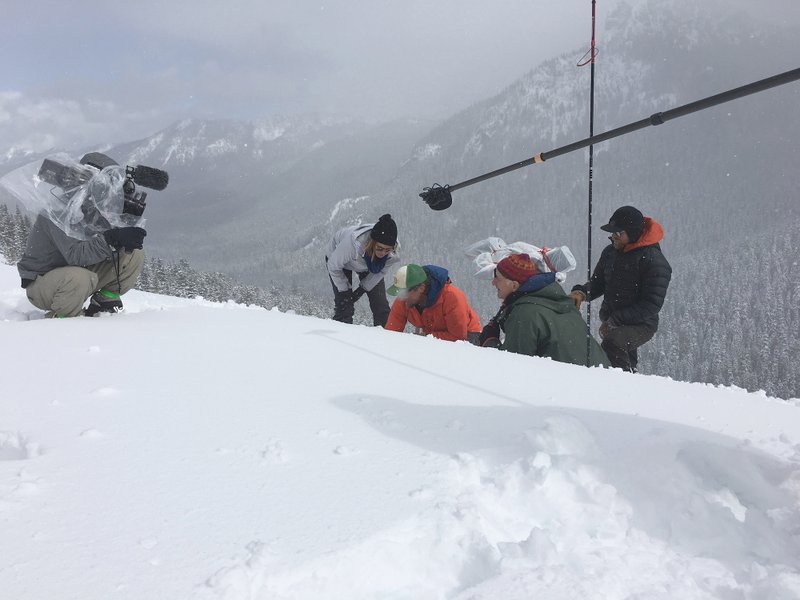BEVERLY HILLS, Calif. — Since 1905, generations grew up poring over the exotic photos in National Geographic magazine. For many American kids it marked the introduction to foreign lands and cultures. None of that has changed, although today some of those still photographers that sweated in the jungles of Borneo or froze in the barren wastes of the Antarctic are cinematographers.
And they are filming shows such as Explorer, Big Cat Week and Life Below Zero, which air on the National Geographic network.
The job of a nature photographer not only presents enormous physical challenges, it has its social ones. J.J. Kelley, who has been with National Geographic for 12 years and films for Explorer, was caught trying to smuggle fake elephant tusks into Tanzania and was arrested.
It was all in a good cause, insists Kelley. "Ivory is very illegal. And it's a problem because so many elephants are being slaughtered right now," he says.
"And National Geographic really took this on as a core issue for many years. When we were down to 30,000 elephants getting killed a year, we had a crazy idea of making fake tusks and bringing them into the worst of the worst — not where you have small-scale poachers killing one or two elephants, where you have mechanical, industrial slaughter of whole herds of elephants. So we tried to go into Africa with these (tusks) and they busted us. They were these amazingly engineered tusks. And I was separated from all the cameras at that point," he recalls.
"It was like one of those games where there are seven cases up front, and I knew which ones had the tusks in it. And I was, like, 'Grab this one over here!' But sure enough, they grabbed the tusks, and they took us in the back.
"Luckily I had my phone and I kind of surreptitiously was hiding in the back and doing a little bit of ... moving around and able to get angles with it and it ultimately made the film. It showed how good these tusks were, and it led to legislation that closed down eventually the ivory market in China. And ivory numbers are starting to come up finally."
Kelly Sweet, field producer for Big Cat Week, recalls her white knuckle moment. "After filming gorillas in the Congo for a month, the plane on the way back made an unexpected landing and the landing gear broke," she says. "And so that was one that we didn't know when we were going to get out."
Sweet, who has been with National Geographic for 14 years, didn't start out to be a cinematographer. "I just wanted to do something that worked with animals," she says. "And I tried various different things of working in sanctuaries. I worked at a zoo for a while. I worked at rehab. And this was the best way to have the biggest impact to help animals and to see the most animals around the world."
Michael Cheeseman, who won an Emmy last year for his work on NatGeo's Life Below Zero, has been a cinematographer on that series for five years. "When I was a child, I used to read all the zoo books from National Geographic," he recalls.
"And so when I grew up, I started making films myself. And then I was, like, 'I want to see the world. I want to document these cultures around the world.' So luckily in my career I've traveled across the globe. But for Life Below Zero it's been so inspiring because we meet all these people [who] live in the middle of nowhere and live off the land and live very comfortably and very happy.
"And so for me, once I get a camera in my hand, those were the stories I was searching for ... It was just the passion of holding the camera and telling a story through a lens."
Kelley says he and his colleagues are keenly aware of what other cinematographers are producing on other programs such as the BBC's Planet Earth series and PBS' nature films. "We are, at the end of the day, a family," he says, "and you always see what other networks are doing and you try to up the game.
"I always think that National Geographic has been a leader in terms of visuals. We try to capture the best images. That's what we've done for a long time and that's what we're charged with, this heavy responsibility of bringing that forward into the future," he says.
"I remember being in Antarctica living in a tent for 30 days and imagine that you're there in Antarctica and it's just cold everywhere. You're wearing 30 pounds of equipment to keep you warm. You're laying on a sheepskin that they gave you to insulate you from the cold, and then you have to get up and charge the camera equipment and document the team. There is an element of suffering in that. But, at the end of the day, you want to bring home these images," he says.
"You want to do a good job because you're going to go do this again, but you feel charged with this responsibility of holding up to that yellow rectangle of bringing home the best images possible."
Weekend on 02/14/2019

